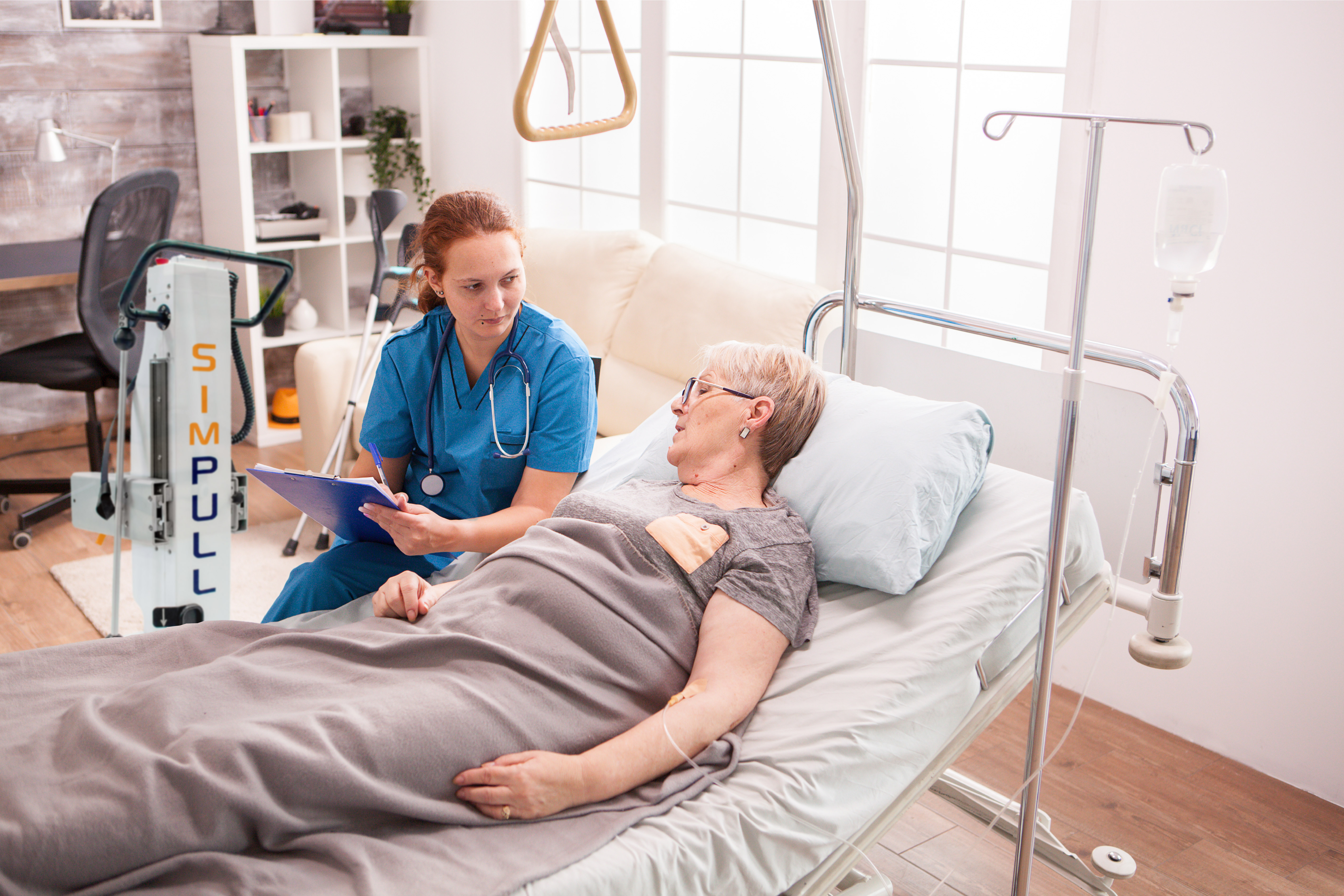Menu

July 28, 2025
for clinicians
The SimPull patient transfer device was designed to ensure that clinicians don’t have to lift patients or use any force when performing patient transfers. Learn how it supports safe patient handling and mobility.

Historically, the effects of safe patient handling and mobility have not been fully understood in healthcare settings. Although the 1970s and 80s brought recognition that lifting and transferring patients was a major cause of back pain among nurses, meaningful change was slow. In the 1990s, efforts to implement safe patient handling practices and ergonomic approaches began to take shape. But it wasn’t until the late 1990s that the underlying biomechanical risk factors behind these injuries were fully understood (AIHA, p. 27).
Today, we know that patient transfer-related injuries cause 25% of all workers’ compensation claims (AON), and that regardless of proper body mechanics or staff member strength, healthcare workers are always at risk when completing a manual patient transfer. The need for supporting safe patient handling and mobility efforts is significant, affecting healthcare staff, facilities, and patients alike.
On the healthcare staff side, work-related musculoskeletal disorders (WMSDs) caused by patient transfers are associated with the following (AIHA p. 14):
For healthcare facilities, WMSDs have serious consequences: fueling staff burnout, upping turnover, and significantly increasing expenses tied to disability claims, workers’ compensation, and healthcare costs. In 2017 alone, injuries related to overexertion during manual patient transfers led to $1.66 billion in costs, representing over 30% of all workers’ compensation expenditures. The most common incidents leading to these claims included repositioning patients, handling combative or uncooperative individuals, and transferring patients in and out of seated positions, with average claim costs ranging between $20,600 and $25,400 (AIHA p.14).
The patient experience is also highly affected by the quality of patient transfers received. Beyond the significant danger of injury from improper transfers, nurses who are fatigued and overexerted are more likely to make medical errors and to be less friendly or engaging when in discomfort (AIHA p.16). Manual patient transfers can lead to injury for patients due to improper techniques, pre-existing patient conditions, lack of staffing, and mistakes made during transfers.
Patient transfer processes have a profound impact on every aspect of the healthcare system. For staff, these injuries disrupt physical, emotional, and mental well-being, leading to lasting consequences both on and off the job. For healthcare organizations, the financial and operational toll is large, with billions spent on claims and high turnover rates. And for patients, the effects can be seen in both safety and quality of care. Addressing the root causes of WMSDs is not only a matter of protecting healthcare workers, it’s essential for ensuring a safe, effective, and compassionate care environment for all.
The SimPull patient transfer device was designed to ensure that clinicians don’t have to lift patients or use any force when performing patient transfers. Even strong staff members are liable to manual patient transfer injuries because of the number of risk factors that contribute to WMSDs.
These manual transfer risk factors include:
The SimPull effectively removes all of these variables and transforms the manual patient transfer into a regulated, controlled, mechanized transfer process. The device offers a consistent solution to a situation with extreme variability. With only two staff members needed and zero force or lift required, the SimPull’s unique process prioritizes safe patient handling and mobility, as well as optimizing clinical workflows and time savings.
In addition to improving safety for clinicians, the SimPull also enhances the patient experience. Transfers are smoother and more dignified, especially for patients with limited mobility, pain, or cognitive challenges. By minimizing manual handling and prioritizing predictability, SimPull helps reduce patient anxiety and discomfort during transitions. This dual benefit, protecting both staff and patients, makes the SimPull an essential tool for modern healthcare environments focused on safety, efficiency, and patient-centered care.
Learn more about the SimPull, or reach out to discover how the SimPull can make a tangible difference in your healthcare facility.